20 Key IT Trends
- Updated: Nov 13, 2024
- 10 min
The IT sector is a crucial driver of innovation, impacting almost every aspect of our lives.
By 2025, some game-changing trends are expected to reshape the business, communication, and technology landscape.
From quantum computing to the critical need for data security, this article lists the 20 most significant IT trends that businesses and IT professionals should keep a close eye on.
Transform your ideas into reality with top-tier software developers — contact us to get started!
Top IT Statistics for 2025
- Global IT spending is expected to reach $4.6T by 2023.
- The U.S. tech industry is expected to grow at a CAGR of 5% through 2025.
- Cloud computing to grow at a CAGR of 17.5% by 2025.
- The tech industry represents 35% of the total world market.
- 90% of the world’s data was generated between 2019 and the present.
- The U.S. has over 585K tech companies.
- Over 5.3B active internet users; Asia accounts for >50% of traffic.
- 4.28B users access the web through mobile.
- Social media has 4.2B active users.
- >90% of Americans have internet access; 77% have broadband at home.
1. Generative AI
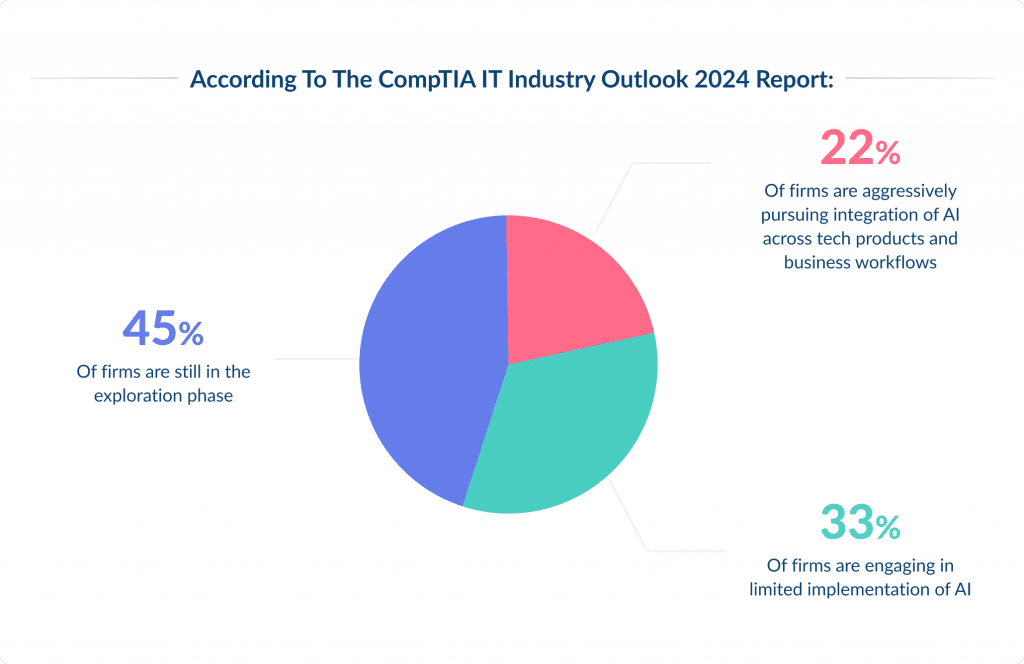
Generative AI is a groundbreaking technology that is changing how content is created in various fields, including art, music, literature, and code generation.
AI systems learn from vast datasets and generate new, original content that resembles the learned material. DALL-E 2 and GPT-4 are leading the charge, showcasing the technology’s ability to produce highly realistic images and text, respectively.
One notable real-world application of generative AI is in advanced drug discovery processes.
For instance, Insilico Medicine, a biotech firm, leverages generative AI to design molecules for new medicines, significantly reducing the time and cost associated with drug development.
The company reported a reduction in time from years to mere months for the initial stages of drug discovery, marking a significant milestone in the pharmaceutical industry.
Despite its potential, generative AI faces challenges, including ethical concerns around copyright and deepfake content. However, the industry is responding with increased regulation and the development of detection technologies.
Market analysis projects that by 2030, the generative AI sector will surpass $667 billion in revenue, driven by its integration into creative, medical, and software development processes.
2. Zero-Trust Security
Zero-trust security has become a crucial part of modern cybersecurity strategies, especially in a world where remote work and digital transformation have expanded the threat landscape.
The fundamental principle of Zero-Trust is “never trust, always verify,” which eliminates the traditional idea of a trusted internal network.
Instead, every access request is thoroughly checked, regardless of where it comes from, significantly reducing the risk of cyber-attacks and data breaches.
According to a report by MarketsandMarkets, the global Zero-Trust Security market is expected to grow from $19.6 billion in 2020 to over $51.6 billion by 2026.
Companies like Google and Microsoft have been at the forefront of adopting and promoting Zero-Trust architectures.
Google’s BeyondCorp initiative, which is a model for Zero-Trust, demonstrates how organizations can secure access to applications and resources without relying on traditional perimeter-based security models.
The real-world benefits include an improved security posture, enhanced compliance capabilities, and a flexible framework that supports digital transformation.
3. Datafication
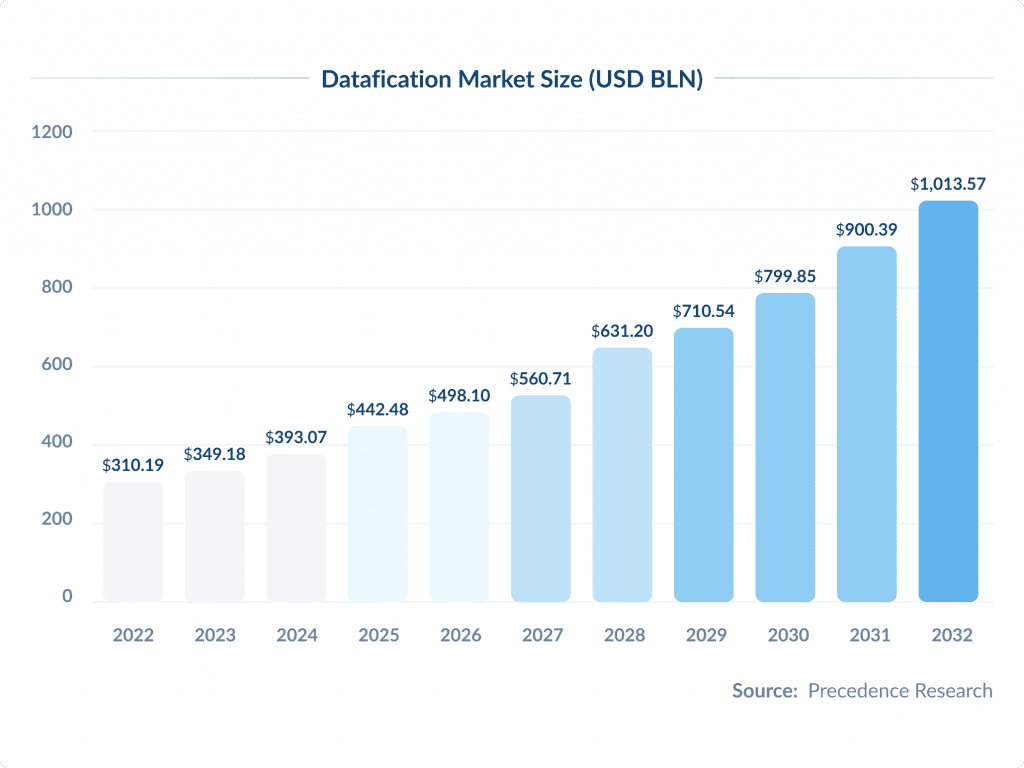
Datafication turns social behavior into quantifiable online data, enabling unprecedented data analysis and digital management.
The impact is vast, affecting everything from business operations to societal trends.
Retailers use datafication to understand consumer behavior, leading to personalized marketing strategies.
Learn how to craft effective email marketing strategies for startups to boost engagement.
Privacy concerns led to regulations like GDPR, but the global market for big data was valued at approximately $240B in 2021 and is projected to reach $650B by 2029.
4. Extended Reality

Extended Reality (XR) combines virtual, augmented, and mixed reality technologies to create immersive experiences.
XR is rapidly adopted in entertainment, education, healthcare, and retail, offering enhanced learning, training, and entertainment.
Ready to enter the education tech field? Feel free to discover EdTech startup ideas that can change how people learn and grow.
The global XR market size is expected to reach $250 billion by 2025, according to Statista.
Challenges include high development costs and the need to widely adopt XR hardware. However, technology advancements and decreasing costs drive broader acceptance of XR.
5. Genomics
The study of an organism’s complete set of DNA, called genomics, has revolutionized the medical field by enabling advanced disease prediction, personalized medicine, and groundbreaking treatment options.
According to MarketsandMarkets, the global genomics market size was valued at $18.9 billion in 2020 and is projected to grow at a CAGR of 19.5%, reaching $47.7 billion by 2025.
Genomics has numerous real-world applications, from diagnosing genetic disorders to cancer treatment. In oncology, genomic sequencing helps identify specific mutations in a patient’s tumor, allowing for targeted therapy.
The success of the Human Genome Project has paved the way for initiatives like the 100,000 Genomes Project in the UK, which aims to sequence 100,000 genomes from NHS patients to further medical research and treatment.
While genomics holds immense potential, it also faces challenges related to ethical considerations, data privacy, and the significant computational resources required to analyze genetic data.
Nevertheless, ongoing research and technological advancements address these issues, making genomics an increasingly vital part of healthcare.
From idea to impact. Let's shape your startup's product vision together!
6. Responsible AI
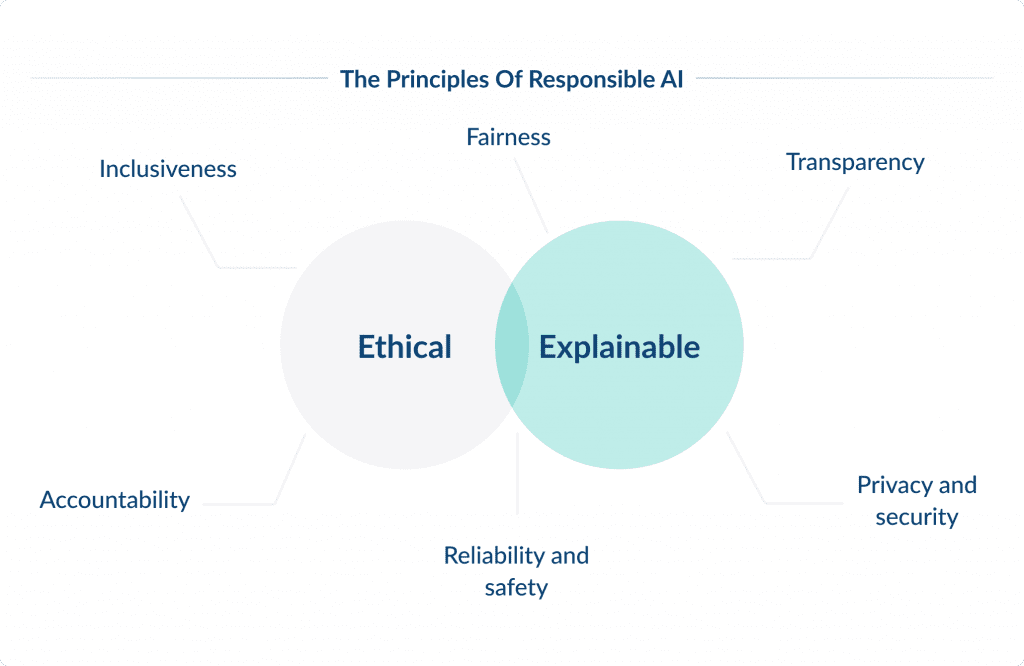
As artificial intelligence (AI) becomes increasingly integrated into our daily lives, it’s crucial to ensure that these systems are ethical, fair, and transparent.
Both the tech industry and governmental bodies have recognized the importance of responsible AI practices.
For instance, the EU’s Ethics Guidelines for Trustworthy AI emphasizes accountability, data privacy, and the need for AI systems to be understandable by humans.
However, implementing responsible AI is not always a walk in the park. One of the significant challenges is the complexity of AI algorithms, making it difficult to understand how decisions are made.
Researchers focus on developing more interpretable AI models to address this “black box” problem.
Also, ensuring that AI systems do not perpetuate or amplify biases in training data is another critical concern that requires ongoing attention and effort.
As of 2025, the push for responsible AI is gaining momentum, with companies investing in AI ethics research and developing tools to audit and mitigate bias in AI systems.
7. Self-Healing Software
Self-healing software is a game-changer for keeping critical applications and services up and running.
This technology automatically detects and corrects faults without the need for human intervention.
It’s particularly important for finance, healthcare, and e-commerce sectors where system availability is paramount.
Thanks to advancements in machine learning and AI, self-healing software is becoming increasingly sophisticated and capable of learning from past incidents to prevent future failures.
Want to join the booming eCommerce market? Learn how to develop an eCommerce app that meets customer needs.
8. Digital Workforce Solutions
The use of digital workforce solutions is becoming increasingly popular across various industries.
These solutions involve robotic process automation (RPA) and artificial intelligence (AI) to automate routine tasks that humans traditionally perform.
This trend revolutionizes the workplace by improving efficiency, reducing errors, and freeing employees to focus on more strategic tasks.
According to a recent report by Grand View Research, the global digital workforce solutions market is projected to grow significantly, with RPA software revenue alone expected to exceed $5 billion by 2025.
Industries such as banking, insurance, and healthcare are leading the way in adopting these solutions for processes ranging from customer service to compliance and claims processing.
9. Process Automation
Automating complex business processes and workflows using technology can help organizations increase efficiency, reduce costs, and improve overall performance.
This trend has become increasingly popular and involves more than simple task automation. Entire processes are being automated using tools like AI, RPA, and workflow management systems.
The global market for process automation is expected to reach $83.2 billion by 2027, up from $61.9 billion in 2020, according to a report by MarketsandMarkets.
Industries like manufacturing and services are driving this growth, with process automation critical in optimizing production lines and enhancing customer experience and operational efficiency.
10. Robotic Process Automation (RPA)
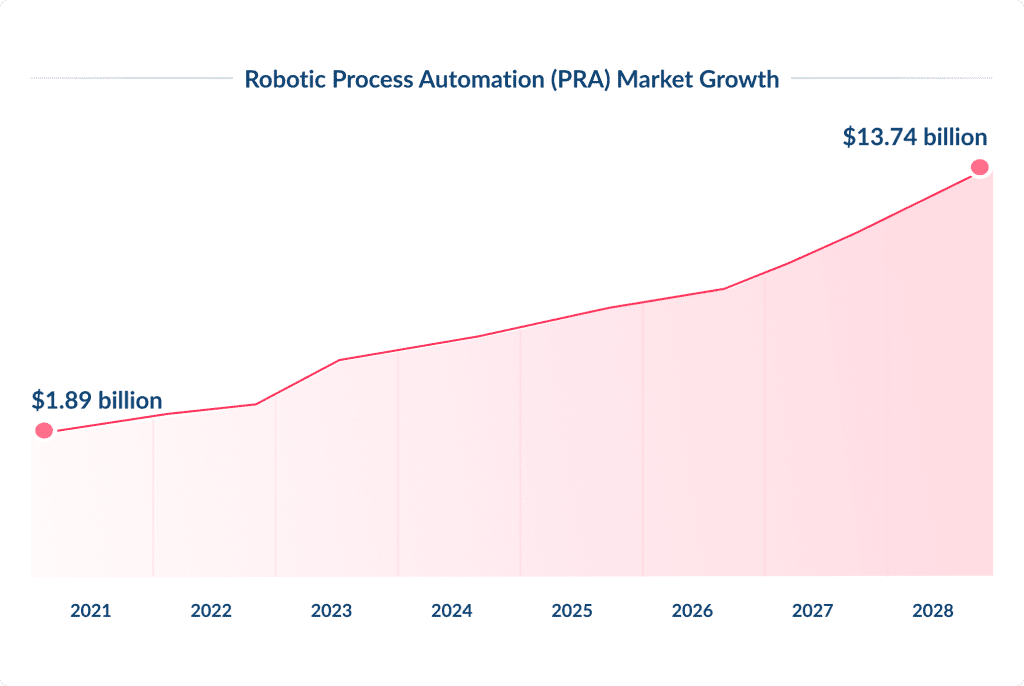
Robotic Process Automation (RPA) is a game-changing technology that enables businesses to automate routine and repetitive tasks using software robots.
RPA is gaining immense popularity across various sectors, from customer service to data entry and invoice processing.
The global RPA market size has already hit $1.89 billion in 2021 and is projected to reach $13.74 billion by 2028, as per a report by Grand View Research.
This growth is driven by the increasing demand for automation in industries like finance, healthcare, and retail, which aims to enhance productivity and reduce operational costs.
11. Edge Computing
Edge computing is a new paradigm that aims to bring computation and data storage closer to where they are needed to improve response times and save bandwidth.
The adoption of edge computing is being driven by the increasing popularity of IoT devices and the need for real-time computing in applications such as autonomous vehicles, smart cities, and industrial automation.
According to a report by Fortune Business Insights, the global edge computing market is expected to grow at a CAGR of 37.4% from 2020 to 2027 and reach $43.4 billion.
Although managing the complexity of distributed networks and ensuring security remains a challenge, the benefits of improved performance and reduced latency continue to drive innovation in this space.
12. Quantum Computing
Quantum computing is an exciting new technology that uses the principles of quantum mechanics to process information at lightning speeds.
It can potentially revolutionize several industries by solving complex problems in mere seconds, which would have taken traditional computers centuries to compute.
While it is still in the experimental phase as of 2025, its possibilities for drug discovery, cryptography, and optimization problems are immense.
A report by MarketsandMarkets estimates that the global quantum computing market will grow from $472 million in 2021 to over $1.76 billion by 2026.
However, there are still some challenges to overcome, such as qubit stability and error rates.
13. Network-as-a-Service
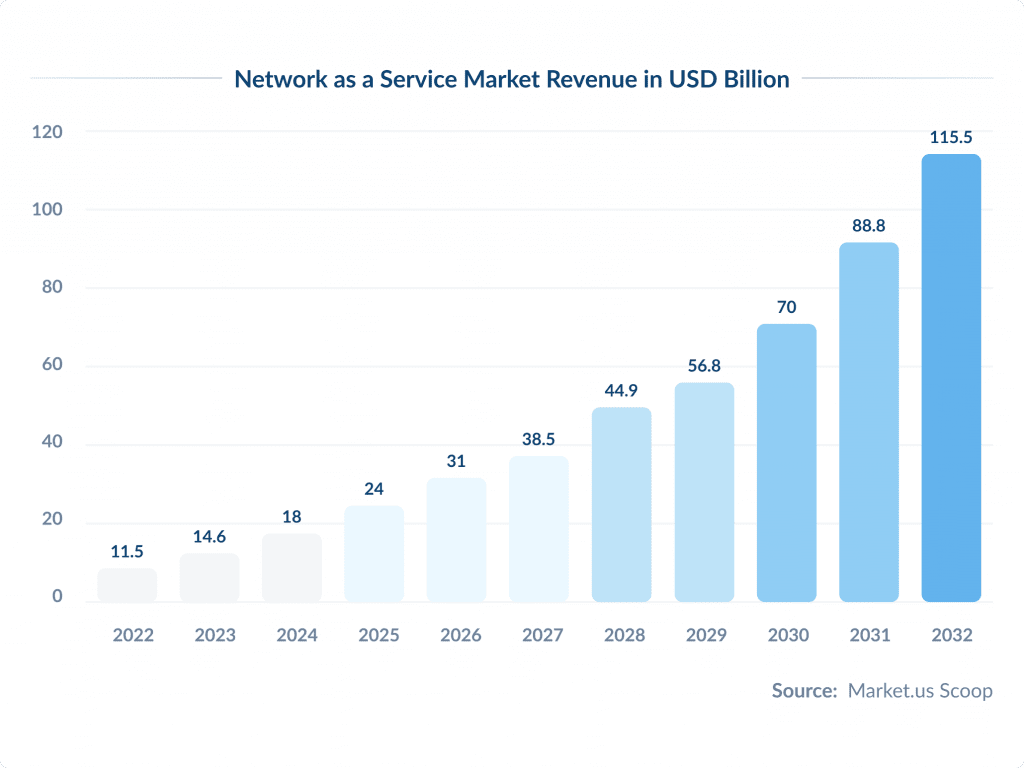
Network-as-a-Service (NaaS) is becoming popular for businesses looking for cost-effective and flexible networking solutions.
With NaaS, companies can access network services over the Internet without investing in expensive infrastructure.
NaaS solutions offer a range of networking resources, including bandwidth, VPNs, and firewall services, which can be easily scaled to meet business needs.
The NaaS market is expected to grow from $10.4 billion in 2021 to $31.6 billion by 2026, as reported by MarketsandMarkets, as more and more companies adopt remote work environments and cloud computing and require agile and scalable networking solutions.
14. Internet of Things (IoT)
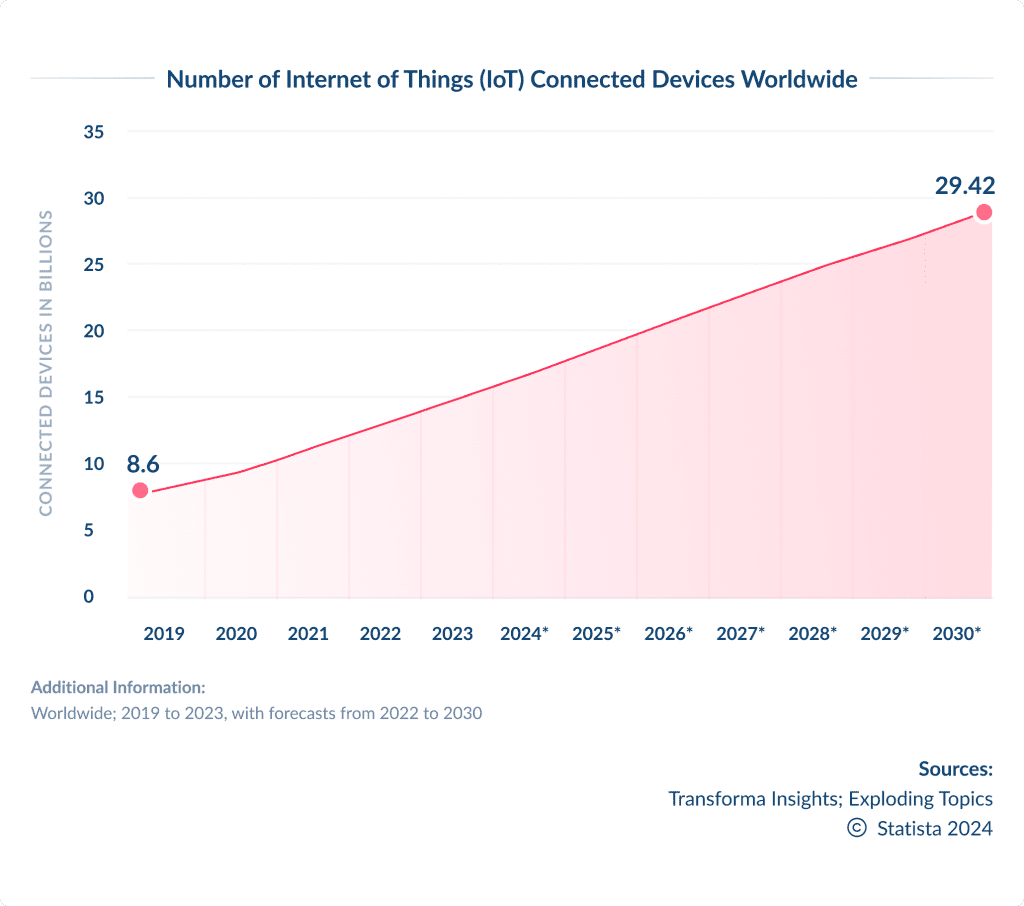
The Internet of Things (IoT) connects billions of devices worldwide, allowing them to gather and share data.
This connection allows manufacturing, healthcare, and agriculture industries to operate more efficiently and intelligently.
According to Statista, the number of IoT devices is expected to surpass 29 billion by 2030.
As IoT technology grows, we can look forward to smarter cities, improved agricultural practices, and better patient care through remote monitoring.
However, we also need to address concerns about data security and privacy.
15. AIOps Solutions
Artificial Intelligence for IT Operations (AIOps) is a cutting-edge technology that harnesses machine learning and big data to enhance IT operations.
AIOps platforms use data analysis to predict and avert issues before they cause disruptions to business operations.
The AIOps market is experiencing rapid growth, with Gartner forecasting that by 2023, 40% of DevOps teams will integrate AIOps platforms into their workflow.
This growth is driven by the need to manage increasingly complex IT environments and accelerate digital transformation initiatives.
Check out our DevOps services to learn more about our DevOps practices and tools.
16. Multi Cloud Adoption
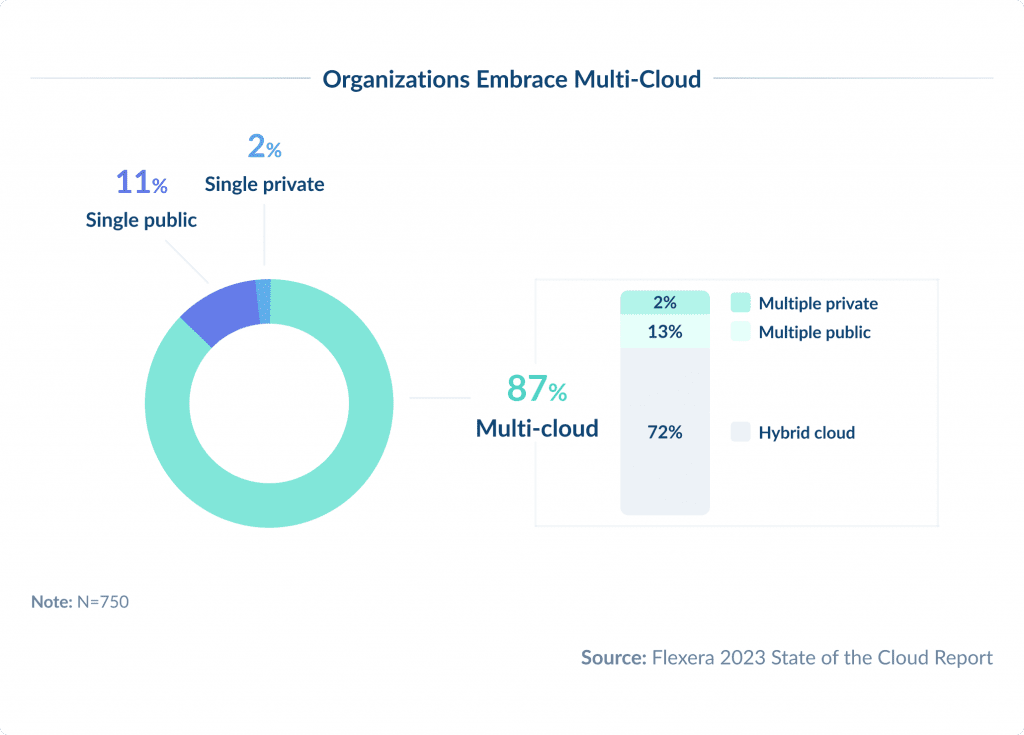
Many businesses are embracing multi-cloud adoption, which involves using multiple cloud computing and storage services in a single architecture.
This approach allows companies to optimize cost and performance by leveraging the best features of each cloud service provider while also ensuring redundancy.
According to a recent report by Flexera, 92% of enterprises in 2021 have already adopted a multi-cloud strategy.
By choosing cloud-based app development, companies can ensure their applications are accessible and scalable.
However, managing security and compliance across different platforms can be challenging, but the benefits of enhanced resilience and agility drive many companies towards multi-cloud adoption.
17. Silicon Photonics
Silicon photonics technology has gained popularity in the US due to its ability to transmit data at high speeds, which is essential for supporting the increasing demand for data transmission bandwidth in data centers and high-performance computing systems.
This technology uses silicon as a medium to transmit data among computer chips by using light instead of traditional electrical conductors.
According to a report by MarketsandMarkets, the silicon photonics market is projected to grow from $774 million in 2020 to $3.77 billion by 2025.
The adoption of silicon photonics is driven by its potential to reduce energy consumption and increase the speed and density of data transmission.
18. Blockchain
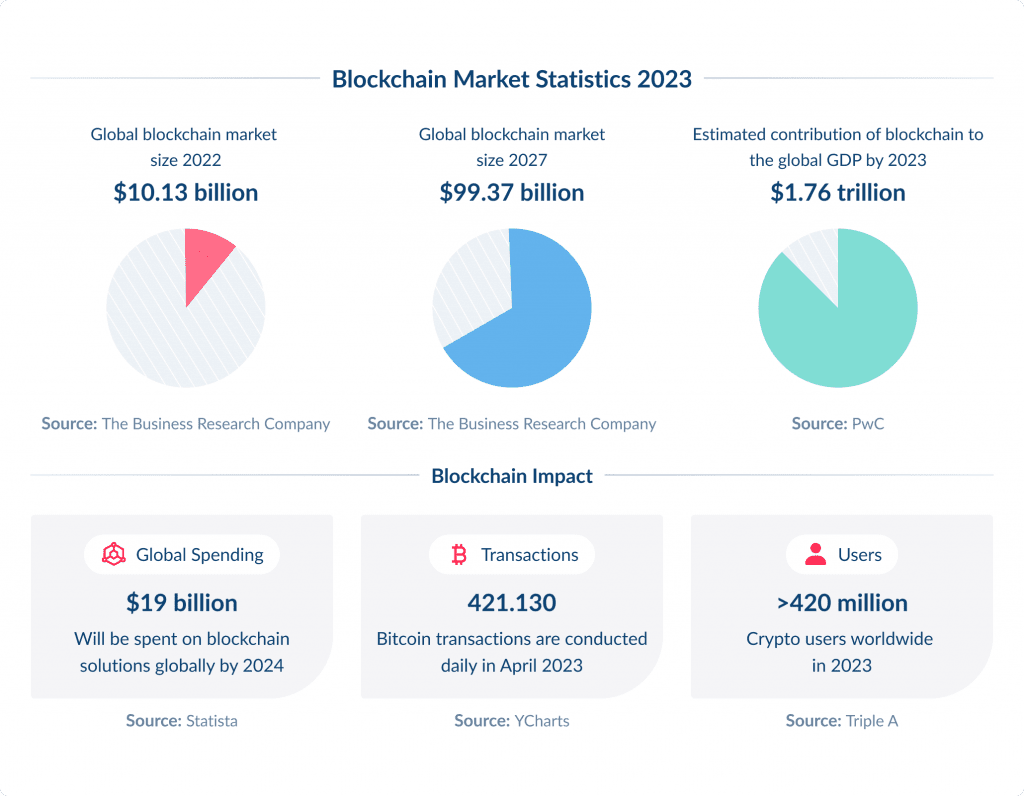
Blockchain technology is an innovation that provides a secure and decentralized way to record transactions across various computers.
It allows historical data to remain unchangeable without the consensus of all network participants.
This technology is not limited to cryptocurrencies but also extends to supply chain management, voting systems, and identity verification.
According to MarketsandMarkets, the global blockchain technology market is expected to grow from $3 billion in 2020 to $39.7 billion by 2025.
19. New Energy Solutions
The energy sector is going through a major transformation as new energy solutions, such as renewable energy sources and storage technologies, are becoming more widespread.
These solutions are reducing our reliance on fossil fuels and helping mitigate the negative impact of climate change.
Innovations in solar, wind, and battery storage technologies are making renewable energy more efficient and affordable.
According to Allied Market Research, the global renewable energy market is expected to grow at a CAGR of 8.4% from 2021, reaching $1.97 trillion by 2030.
A growing concern for the environment, government policies, and technological advancements drive this shift towards sustainable energy sources.
Looking for reliable JavaScript developers? We’ve got you covered!
20. Business Intelligence Platforms
Business Intelligence (BI) platforms are essential tools for organizations wanting to stay ahead.
BI tools provide valuable insights into trends, patterns, and anomalies in data, helping businesses improve efficiency, increase profitability, and identify market opportunities.
The global market for BI was valued at $23.1 billion in 2020 and is expected to grow to $33.5 billion by 2025, according to a report by MarketsandMarkets.
With the increasing volume of data and the need for data-driven decision-making in competitive business environments, it is no wonder that more and more businesses are turning to BI platforms.
Conclusion
Looking at the major technology trends, it’s clear that the industry is going through some significant changes.
There’s a strong emphasis on boosting efficiency, security, and innovation, which is shaping how businesses use technology to drive growth and meet evolving customer needs.
To stay on top of things, IT professionals need to not only understand these trends but also be able to implement them effectively.













